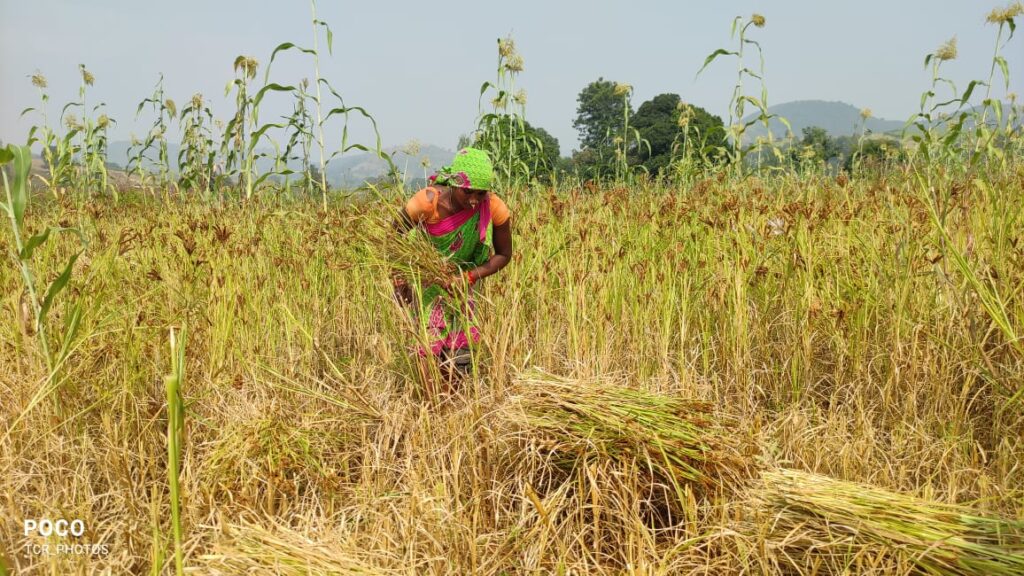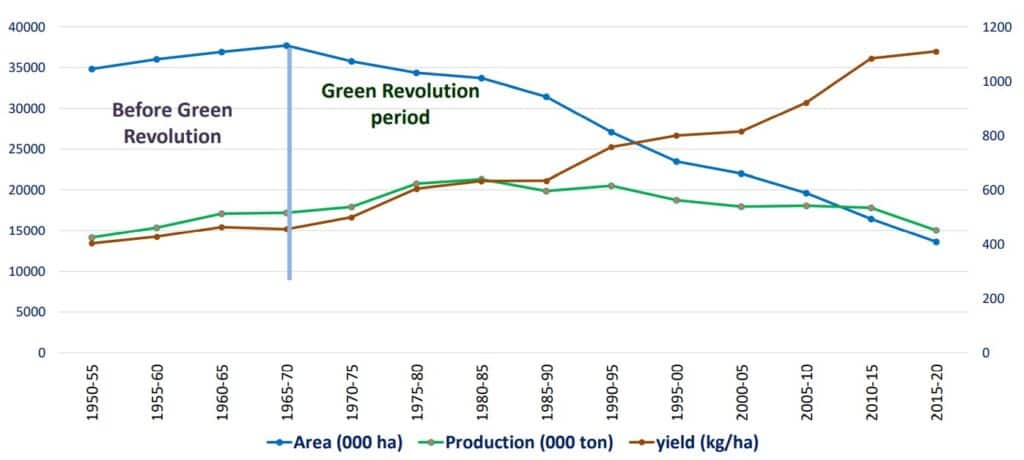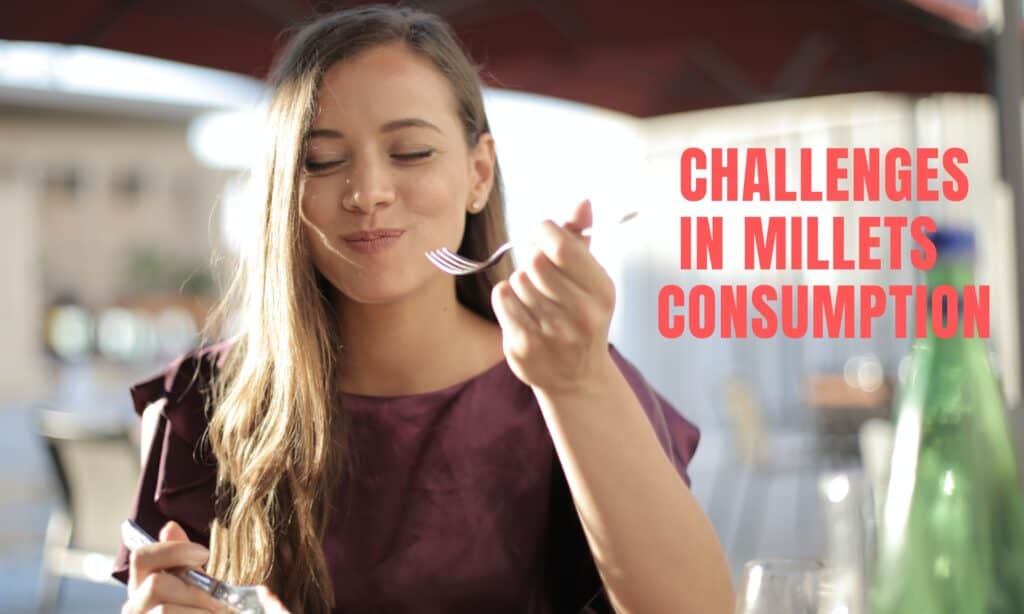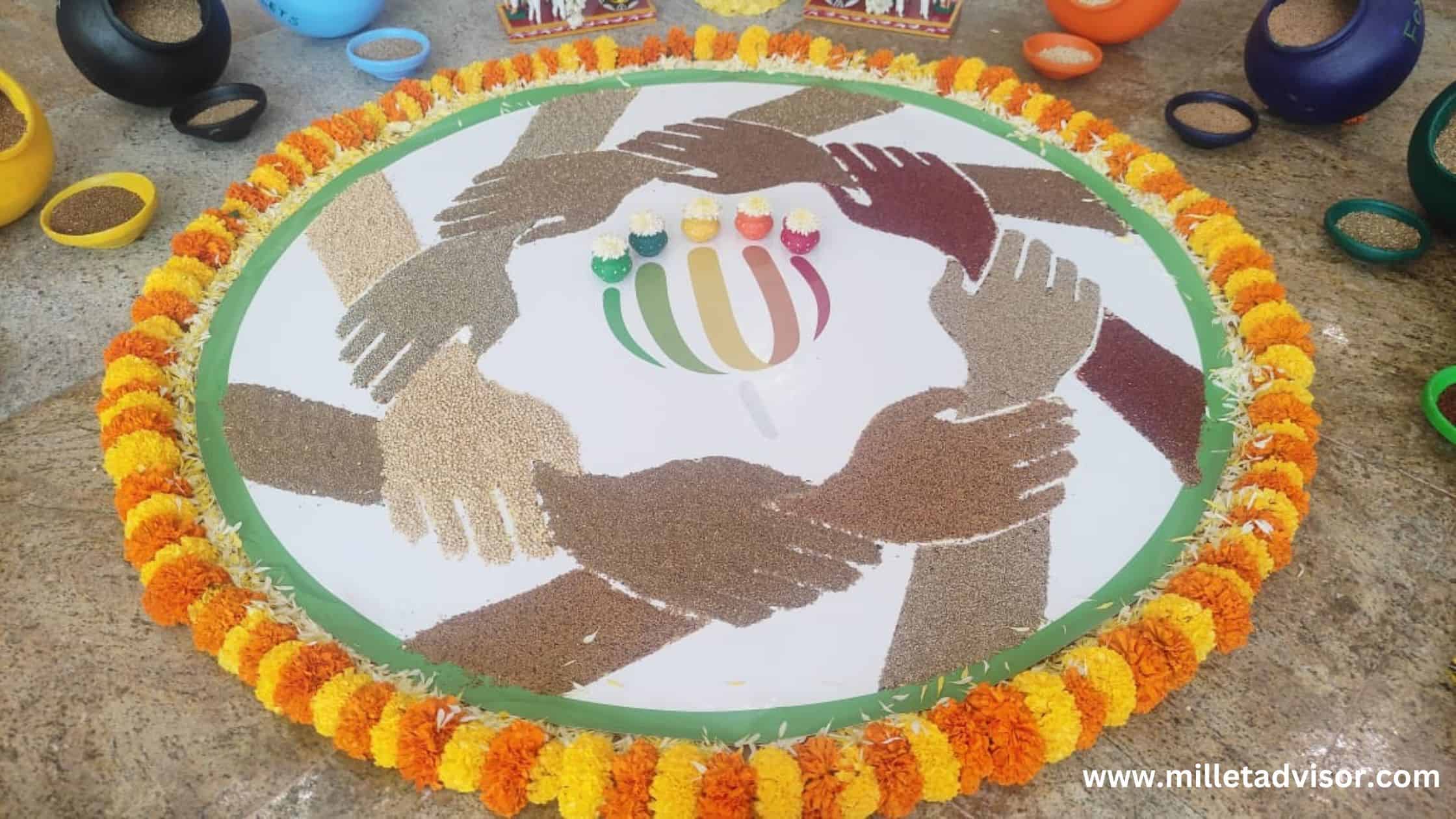Table of Contents
What is MIIRA?
MIIRA stands for ”Millet International Initiative for Research and Awareness. India introduced a draft on MIIRA which was placed during the first Agriculture Deputies Meeting under the Agriculture Working Group (AWG), G20 at Indore, Madhya Pradesh on Feb 13-15, 2023.
Before, going into details of MIIRA, let us understand why this initiative is required in millets. In today’s context, the millet sector has been facing a lot of challenges pertaining to the production of millets, processing, value addition, marketing, and consumption. The challenges can be mitigated by taking extra efforts in solving the problems faced in the value chain of millets. The challenges are not only faced in India but also throughout the world. So, let us see, what are the challenges faced in the millet sector.
Challenges in Millet Production:

- Low productivity of millets:
When we compare the productivity of millets with other crops like wheat, rice, and maize, it is very low. As you know millets are grown in marginal land with low fertility and most of them are rainfed which results in low productivity. Apart from these, there are many constraints in millet production. During my project work on millets, I could find the major constraints are weeds and most of the farmers cultivate millets in a traditional way. They simply broadcast the seeds on the onset of monsoon and harvest the crop after 75-90 days.
The yield gap of millets can be minimized if a proper package of practices is followed. It is found that for the farmers who practiced good practices like the System of Millet Intensification (SMI) in Finger Millet, the yield has doubled as compared to the traditional methods.
When millet farmers were asked about the factors that were to be followed to increase the yield of millets, the foremost response was sowing/transplanting on time, followed by weeding on time, proper nutrient management, and using improved varieties.
- Area under Millet is Declining:
It has been found that the area under millet is declining dramatically in India. If we compare the area under millets during the 1960s to the present scenario, it has reduced by more than 50%.

If the fallow and wastelands are bought under millet cultivation, then the production can increase to much extent. Along with this, the millet farmers need to be incentivized to encourage them to grow millets.
- Resistance to Pests and Diseases:
As you know millets are hardy crops and very less infestation happens due to pests and diseases. But some pests and diseases often cause significant loss in major millets like Sorghum, Pearl Millet, and Finger Millet.
If more cultivars with significant resistance to pests and diseases are made available to the farmers, this problem could be solved.
I have marked a Finger Millet cultivar, ML-365 which is resistant to neck blast and is highly accepted by the farmers due to its yield and also fodder.
- Millet Seed Production:
Even today farmers are facing problems in getting quality millet seeds. Although there are no issues in Sorghum and Pearl Millet as private players have entered into this segment and made it available to the farmers in India.
There are opportunities to bring quality seeds of minor millets and this can be done by establishing seed hubs for breeding and producing seeds. This seed production needs to be demand-driven and all the stakeholders need to join hands together to improve the seed value chain.
There are many traditional millet varieties that are performing well in the farmer’s field and these varieties need to be bought in the seed chain through Farmer Producers Organization. This intervention will help the farmers to get the right quality seeds and that too in time.
Challenges in Millet Processing:
The millet processing machines available in India have a low recovery of 70-80% of grains and this becomes a challenge for the millet processors. Due to less efficiency, the output has more un-hulled and broken grains. Dehulling efficiency of millets is affected by the impeller speed. As you know millet grains differ in size, shape, and husk content, so it becomes difficult to handle. Depending upon one dehuller for dehusking all types of millets is not suitable rather it requires two types of dehuller. As Kodo and Barnyard Millet contain multiple seed coats, it requires a double-stage dehuller to remove the husk.
Separation of the husk of millets and its collection is quite difficult as it causes spillage all over the processing unit and often gets mixed with the final product. Even many millet processors are facing difficulty in handling and disposing of the husk of the millets. If the husk of millets could be used in making value-added products, then the issue could be solved.
Millets being 100% gluten-free, it becomes very difficult to make some products with all total millet ingredients. Still, more research and development are needed for enhancing the availability of nutrients and decrease the anti-nutritional contents.
Still, progress is continuing on improving the shelf life of processed millet grains. In today’s scenario, the shelf life of millets is enhanced to 4-6 months. But to cater to the international market and exports from India, the shelf life of millets will be enhanced to a minimum of 12 months.
Challenges in Millet Consumption:

Despite their health benefits, millet consumption faces several challenges. We will discuss some of the challenges in millet consumption.
- Lack of Awareness
One of the major challenges in millet consumption is the lack of awareness among people. Many people are unaware of the nutritional and health benefits of millet and tend to prefer rice and wheat in their regular diet. This lack of awareness is particularly true for younger generations who may not have grown up with millet as a staple food.
- Availability
Another challenge in millet consumption is availability. In many parts of the world, millets are not readily available, and even if they are available, they are often expensive. This can discourage people from incorporating millet into their diet.
- Processing and Storage
Processing and storage of millets can also pose challenges. Millets have a short shelf life and can easily spoil if not stored properly. Additionally, processing millets can be time-consuming, as they require thorough cleaning and milling before they can be consumed.
- Taste
The taste of millet can also be a challenge for some people. Millets have a slightly nutty flavor, which some people may find unappealing. Additionally, millets can have a slightly coarse texture, which may not be to everyone’s liking.
- Culinary Tradition
Finally, millets may not have a significant culinary tradition in many parts of the world. People may not be familiar with how to cook and incorporate millets into their diet, which can be a significant barrier to consumption.
Looking into the challenges faced in the Millet sector, MIIRA is a wonderful initiative by India. Definitely, it will resolve many of the issues. Now, let us understand MIIRA’s objectives.
Objectives of MIIRA:
- Coordinating Millet Research Programme at the International level. Research on nutritional benefits of millet.
- To develop new millet varieties which are resistant to pests and diseases as well as performing well in yield.
- To increase the production of millet through scientific practices.
- To increase the consumption of millet through mass awareness.
Funding of MIIRA:
As India takes the lead in this initiative, India will support with the seed money to initiate MIIRA and subsequently, G20 members will contribute to its budget in the form of membership fees. Food and Nutritional Security are among the important top priorities during India’s G20 Presidency.
Conclusion:
To overcome all the challenges in the millet sector, there is a need for constant efforts from all the stakeholders and institutions toward mainstreaming millet. Hope MIIRA will play a critical role in resolving the challenges faced in the Millet sector and also address food and nutritional security.
Author: Tapas Chandra Roy, A Certified Farm Advisor on Millets, ‘Promoting Millets from Farm to Plate’ and an Author of the book -” Millet Business Ideas-Empowering Millet Startups”. In a mission to take the forgotten grains- Millets to Millions. To remain updated on my blogs on Millets please subscribe to my newsletter and for any queries please feel free to write to [email protected]



My name is jagannath chinary iam from odisha jeypore koraput dist.i innovate ragi millet tea .i want to introduce this tea allover India so please suggest how to i do this
My name is jagannath chinary iam from odisha jeypore koraput dist.i innovate ragi millet tea .i want to introduce this tea allover India so please suggest how to i do this iam allready take national awarde from iimr and nutrihub about on millet tea
Namaste, Jaganath Chinaryji,
Congratulations. I am very happy that your efforts have been recognized and awarded by the IIMR. Please contact me via email: [email protected]. We can discuss further. I have a couple of ideas for your product.
Thank you.
With best regards,
Nagaraja Rao K